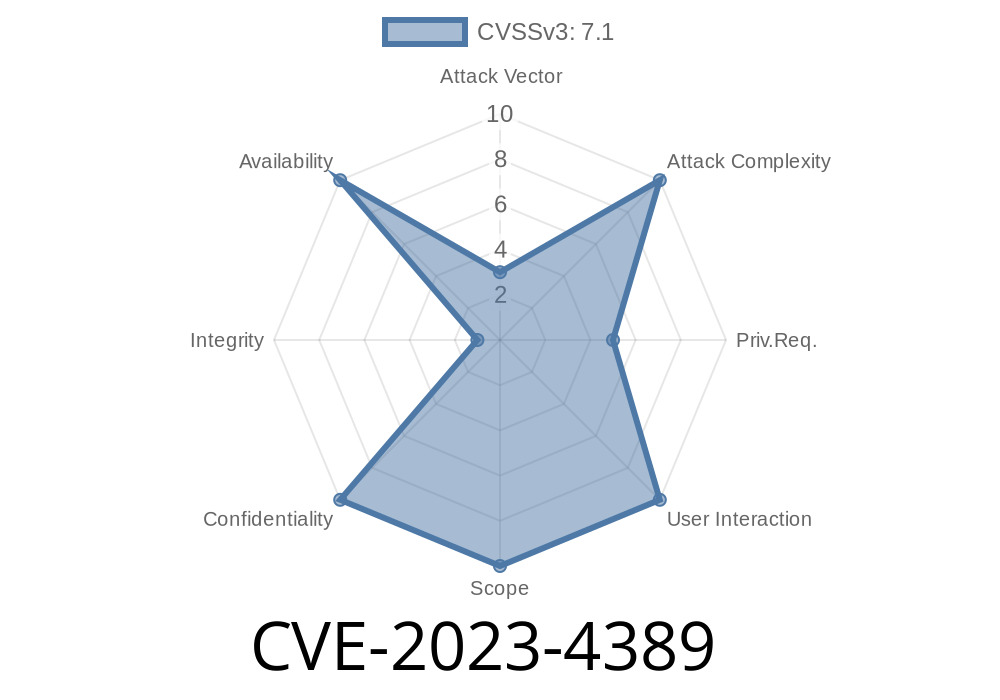The security of Linux systems is often praised for its robustness. But like any huge codebase, subtle bugs can sneak in. One such recently discovered vulnerability is CVE-2023-4389, found in the Btrfs file system implementation within the Linux Kernel. This post digs into what this bug is, how it can be exploited, and why you should care.
What is CVE-2023-4389?
CVE-2023-4389 is a medium to high severity vulnerability caused by a double decrement of a reference count in the function btrfs_get_root_ref() in fs/btrfs/disk-io.c. The bug lets a regular user — not just root — cause the system to crash or potentially leak sensitive kernel memory.
This is important because a local user could reliably take down (DoS) a machine or snoop on data they shouldn't have access to.
How Does Btrfs Handle Reference Counts?
In Btrfs, objects like roots and extents use "reference counting" to track how many parts of the filesystem are using a given object. When the count goes to zero, the object can be safely deleted.
Accidentally decreasing ("decrementing") the count twice for the same object — a double decrement — can cause the object to be freed early, leading to:
Here's a simplified look at the vulnerable code pattern (based on upstream sources)
// File: fs/btrfs/disk-io.c (snippet)
int btrfs_get_root_ref(...)
{
struct btrfs_root *root = NULL;
int ret;
// ... some operations ...
root = btrfs_read_fs_root_no_name(...);
if (IS_ERR(root)) {
ret = PTR_ERR(root);
goto out;
}
/*
* Potential logic where 'root' refcount is decremented twice
* due to unbalanced get/put operations
*/
btrfs_put_root(root); // Decrements refcount
// On error, could call put again
out:
btrfs_put_root(root); // Decrements refcount again
return ret;
}
If out is reached, btrfs_put_root(root) could be called a second time on the same root object, causing the reference count to drop below zero.
Exploitation Technique
A local attacker can trigger this bug by mounting and operating on a crafted Btrfs filesystem image. For example:
Mount the image: As a regular user (using FUSE or with permissions) or as root.
3. Trigger the vulnerability: The kernel DT returns to the error path, and the double decrement occurs.
Results
- Kernel crash: The premature free can lead to a kernel panic ("BUG: Bad page state") or general protection fault.
- Info leak: Occasionally, freed kernel memory may be reallocated for user programs, revealing sensitive info from the kernel heap.
Proof-of-Concept (PoC) Snippet
Here's a minimal PoC that shows how a local user might crash their system using a malicious Btrfs image:
# WARNING: Running this may crash your system.
# Use only on expendable VMs!
# Step 1: Create a normal btrfs image
truncate -s 100M btrfs.img
mkfs.btrfs btrfs.img
# Step 2: Use a tool or hex editor to alter root refs (simulate corruption)
# Step 3: Mount the image (replace /mnt/test as appropriate)
mount -o loop btrfs.img /mnt/test
# Step 4: The mount operation will trigger the vulnerable code path
Automating the invalidation of root refs may require a custom script or tool (see btrfs-progs for building blocks).
Effect: System crash (DoS) or kernel memory leak.
- Affected versions: Linux kernels with the vulnerable code (consult commit history for patches).
The bug has been fixed in newer kernels
- Patch link: Upstream Fix
- Recommendation: Upgrade to a kernel version where this fix is applied, or consult your distro for security patches.
More References
- CVE Record at CVE.org
- Red Hat Bugzilla
- Btrfs Kernel Mailing List
Conclusion
CVE-2023-4389 is a clear example of how subtle reference counting mistakes can have big security implications. Users of Linux on servers, desktops, or especially those who let unprivileged users work with filesystems, should patch promptly. If you need more details, check the links above or contact your distro's security team.
Timeline
Published on: 08/16/2023 19:15:10 UTC
Last modified on: 11/07/2023 04:22:30 UTC
